Atlantic Monthly Contributors's Blog, page 131
June 29, 2016
The Brilliant Ascendency of Jessica Williams

When Jon Stewart announced he was leaving The Daily Show last year, many fans lobbied for Jessica Williams to replace him, pushing one of the show’s standout performers into a limelight she deemed herself not quite ready for. “Thank you, but I am extremely under-qualified for the job!” Williams tweeted. Comedy Central eventually picked Trevor Noah for the gig, and in the following months, Williams’s star has only risen higher. It’s no huge surprise, then, that on Wednesday she told Entertainment Weekly she was moving on from The Daily Show to develop her own scripted series for Comedy Central. It’s great news for Williams, but a huge loss for the show she’s leaving behind.
The discussion over Williams becoming The Daily Show host in 2015 turned into a minor political maelstrom. Williams publicly pushed back against the idea that she had “impostor syndrome,” as suggested by one writer, for calling herself “under-qualified” and pointing to her young age (25 at the time) as a reason for her disinterest in the position. Indeed, there are a thousand reasons to not want the daily grind of a TV hosting gig, and the heightened scrutiny and criticism Noah has received in his year on the job is among them. But as Williams’s popularity and talents have grown, and as The Daily Show has struggled to retain its critical cachet after Stewart’s departure, it’s been hard not to mourn a different outcome in which Williams took the host job and steered the series in a fresher, more relevant direction.
The upside, for Comedy Central, is that the network is retaining one of its hottest young talents, and Williams’s scripted series sounds loaded with potential to be a Broad City/Workaholics-style hit for millennial viewers. The show will focus on “a politically-minded young woman who may be ‘woke’ but doesn’t know what she’s doing,” and will be co-produced by Naomi Ekperigin of Broad City and Difficult People. “It’s ... about someone in their 20s who has all these social ideas but still, like, does not have it together,” Williams told EW. “And she’s goofy and silly and funny!”
Williams’s career has been meteoric—she was hired at The Daily Show in 2012 at the age of 22 and finished her final exams at California State University, Long Beach, before moving to New York for the gig. She quickly stood out as one of the show’s “field correspondents,” having particularly good comedic chemistry with Stewart in their moments of desk banter, and playing off correspondent Jordan Klepper’s brand of stuffy ignorance. As the first black woman hired as a Daily Show correspondent, Williams opened up new angles of coverage for the now 20-year-old show; off-camera, her live comedy podcast 2 Dope Queens (co-hosted with Phoebe Robinson) has become a similar sensation for WNYC Studios.
In her exit interview with EW, Williams seemed very self-aware about her legacy on The Daily Show, and the demands that came with being an African American, female presence on a show that in the past had struggled to promote diverse voices. “As a black woman of color, I feel like I’m supposed to represent these ideals and values that I was taught as a young lady,” she said, explaining the premise of her new show. “Like I’m supposed to carry myself in a special type of way, but oftentimes I’m, like … I’m still in my 20s, and still kind of a mess.”
That dichotomy was part of her stated reason for declining the Daily Show hosting job last year—in essence, she thought she was not quite cynical enough for the gig. “At this age (25) if something happens politically that I don't agree with, I need to go to my room & like not come out for, like, 7 days,” she tweeted. But that kind of profound feeling might have suited The Daily Show this year as it has struggled to capture the zeitgeist. Noah is a personable, breezy host filled with winning energy—but he has seemingly come along at the absolute worst moment for that kind of approach.
Stewart’s often-arch, despairing tone was perfect for the Bush era, when his time at The Daily Show sniping at the administration from the sidelines and mocking the ineffectual left turned him into a generation’s political conscience. But in the even more polarized times of 2016, where viral clips are the norm and viewers are more and more likely to tune in online rather than at 11 p.m., audiences are demanding passion from their late-night hosts. Full Frontal’s Samantha Bee, Late Night’s Seth Meyers, and Last Week Tonight’s John Oliver have jumped to the fore with a reliance on long-form segments that verge on the polemical, intensely “eviscerating” a certain issue or politician to cheers from an audience. Williams had a talent for exactly that on The Daily Show—Noah does not (along with other shortcomings). He may yet find his footing as his show loses one of its biggest draws. But either way, whatever comedic opportunities arise for Williams in the future, “inexperienced” will be an excuse she’ll no longer get to use.

Why the Clinton-Obama Road Show Is Launching in a Different State
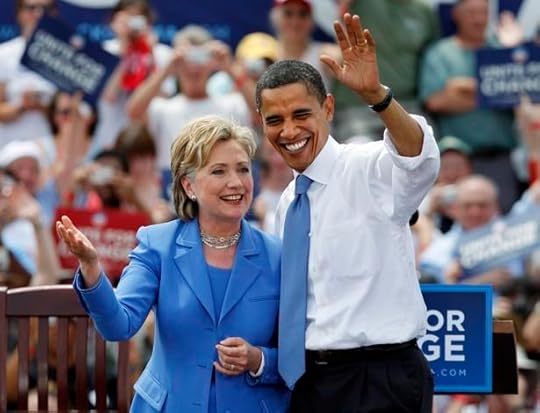
NEWS BRIEF There are two simple ways to cut through the bluster and the spin to see how a presidential campaign is really feeling about its prospects at any given moment: You can follow the money, and you can follow the plane.
Is a candidate retrenching by spending more time and ad dollars in states their party has won in the past and must hold onto in November? Or is he or she being more aggressive—and aspirational—by trying to expand the map and add states that are more difficult, and potentially less crucial, to capture the White House?
On Wednesday, the Hillary Clinton campaign offered up a clue to its level of confidence when it announced that it had rescheduled a joint event with President Obama—the first since he endorsed his former secretary of state—for July 5. The rally was originally scheduled for mid-June, but was canceled following the Orlando shooting. What was notable about the announcement, however, is that the Clinton-Obama road show is launching in a different state than the campaign first planned. The postponed rally was to occur in Wisconsin, a state that Democrats haven’t lost in a presidential year since 1984 but which had been seen as a potential pickup for Donald Trump. Clinton and Obama will instead appear in North Carolina, which the president won narrowly in 2008 but lost four years ago.
Few election prognosticators believe the Tar Heel State will be a big difference-maker to Clinton’s hopes in November; if she wins there, Clinton likely will have won the presidency comfortably. Taking North Carolina, in other words, is more about running up the score.
Why the switch? Just look at the polls. The Clinton campaign announced the original Obama rally on June 9, but it was probably agreed upon a few days earlier when the president decided to endorse her. In early June, her lead over Trump in the Real Clear Politics average was about two points. Three weeks later, after a damaging month for the presumptive Republican nominee, Clinton’s advantage is more than six points. Clinton’s lead in Wisconsin is more than seven points in the RCP average, while in North Carolina, Trump has a slight advantage.
The campaign still wants to use Obama chiefly as a validator for Clinton who can reach out to Bernie Sanders’s supporters by citing his own past suspicions of her. As White House communications director Jen Psaki told Politico, the president is “the highest-profile convert” in Clinton’s corner. That seemed to be the idea behind sending Obama and Clinton to Wisconsin, a state that Sanders won in the primaries. But she needs the suddenly popular president to excite the Democratic base, whether it is by persuading white liberals in Green Bay or making sure African Americans in Charlotte turn out for her in the same numbers they did twice for him.
Swapping out Wisconsin for North Carolina now doesn’t mean Clinton and Obama won’t return to the Badger State later (together or separately), either because the race tightens again or perhaps to help Democrat Russ Feingold in his bid to win back the Senate seat he lost in 2010. Obama is expected to campaign frequently on Clinton’s behalf later this summer and fall. Yet in contrast to Trump, who has campaigned already in several states that don’t figure to be competitive in November, Clinton has been exceedingly deliberate in her schedule so far. Choosing one state for another to campaign with her most powerful new surrogate for the first time isn’t just about logistics. It reflects a campaign that has swung solidly toward her in the last few weeks.

Will Brexit Actually Curb Immigration to the U.K.?
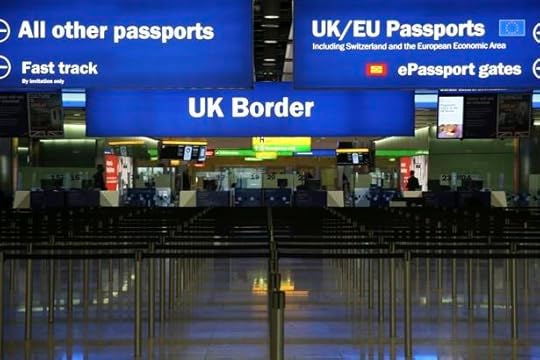
Immigration was at the heart of the campaign in the U.K. to leave the European Union—though it was by no means the only issue—and when the votes were ultimately counted, a comfortable majority, 52 percent to 48 percent, chose to leave the bloc.
“The political message from the referendum is for more control on
immigration,” Will Somerville, the U.K. senior fellow at the Migration Policy Institute, told me. “And that's a very clear message.” But what’s not clear yet is whether and how that message will actually result in significant reductions to immigration into the U.K.
Indeed, the message had already been clear for a long time. As Reihan Salam pointed out in Slate last week, starting in 1997, Tony Blair, the former British prime minister, presided over a transformation of immigration into the U.K.
“Over the following years, roughly twice as many immigrants arrived in the United Kingdom as had arrived in the previous half-century,” Salam wrote. “Many who arrived during that earlier era hailed from the Caribbean and South Asia, and by the early 1990s, 7 percent of England and Wales’ population belonged to ethnic minorities. By now, that share has grown to over 14 percent.”
That transformation, coupled with unfettered immigration from EU member states, evoked responses ranging in intensity from mild anxiety and desire for controlled immigration to outright xenophobia and insistence that all immigration stop (though many people also welcomed the newcomers). Starting in 2010, David Cameron, now the outgoing British prime minister, tried to apply stricter controls to non-EU immigration into the U.K. But the results weren’t what had been expected: The government’s rules did not apply to family unifications, international students, and high-skilled workers who came to the U.K. with a job offer. Last year, the number of immigrants who came into the U.K. to stay for a year or more was 300,000, roughly split between EU and non-EU citizens.
And since the U.K. controlled its own policies on immigration from outside of the EU even prior to the Brexit vote, the next British leader’s task in the wake of the referendum results will be proving he or she can reduce immigration to the U.K. from within the bloc. But what will that cost the country? “In my view, the answer is: [The U.K.] can [control immigration], but if it does so it will pay a price during negotiations on a new trade deal with the European Union,” Somerville said.
Indeed, the nature of the U.K.’s future relationship with the EU is now the subject of tense discussions not only in London, but also in Brussels. Boris Johnson, the former London mayor who was the head of the “leave” campaign and is seen by many as Cameron’s likely successor as prime minister, wrote this week in The Telegraph that he did not think the “Brexit” vote was about immigration from within the EU at all.
“EU citizens living in this country will have their rights fully protected, and the same goes for British citizens living in the EU,” Johnson wrote in his column. “British people will still be able to go and work in the EU; to live; to travel; to study; to buy homes and to settle down. … [T]here will continue to be free trade, and access to the single market.”
Johnson, in addition to other British politicians (and even President Obama), envisions a relationship with the EU that is akin to Norway’s. Norway is not an EU member, but it’s part of the European Economic Area, which gives it access to the single market, in exchange for which it, among other things, allows the freedom of movement within its borders for EU citizens—that same freedom of movement that many British voters want to limit. Indeed, while Johnson in his column said that British people will be able live and work in the EU, he pointedly did not mention whether the citizens of EU countries will be accorded that reciprocal right.
“By leaving, my view and I believe that of most observers, is that if we were to negotiate full access to the single market with no tariffs on trade, we would have to accept free movement of labor,” Somerville told me. “Now that seems to be incompatible with what this vote was about. So if we do control European migration, it seems to me inevitable that there will be some limits on our access to the single market: whether those limits are tariffs or whether those limits are variable tariffs, I think that’s all to be negotiated.”
As if underscoring that message, Donald Tusk, the president of the European Council, said Wednesday: “There will be no single market a la carte.” Meaning the U.K. cannot pick and choose those aspects of the single market it likes, such as tariff-free trade, and reject those it doesn’t—like freedom of movement.
But even before they get to that sticky issue of freedom of movement, U.K. and EU negotiators will have to contend with the approximately 3 million EU nationals who now live in Britain and the about 1.4 million Britons who live in Europe. It is seen as highly unlikely they will be expelled, or repatriated en masse, and, in fact, in a post-Brexit world many could be accorded the rights and entitlements they already enjoy. But, says Somerville, “there will be a countervailing force, which is that this will be an issue on the table during negotiations on exit and so I don’t think we’re going to get clarity that quickly.”
One of the few things on which there is clarity is that when the U.K. invokes Article 50 of the Treaty of Lisbon—the starting gun, as it were, on leaving the bloc—EU immigration to the U.K. will likely slow, even if it doesn’t stop. The U.K.’s current points-based system that applies to non-EU nationals could be expanded to include EU nationals, as well. That system tends to favor a particular type of immigrant.
“I think you would see a shift toward more qualifications, higher-income, higher-skilled workers,” Somerville said. “And you’d see an overall reduction in the numbers coming from Europe,” especially from places such as Poland and Romania, where workers tend to be younger, less experienced, possessed of fewer qualifications, and, consequently, earn less. This, Somerville warns, will result in an increase in other channels of migration, including family reunions and illegal immigration, to get around the system.
But before any of this can happen, the U.K. must invoke Article 50, which Cameron says is the next prime minister’s job, and Johnson says he’s in no hurry to invoke. And the turmoil in both of the U.K.’s major parties may further complicate the complex process that is destined to follow.
“There has been a clear division and polarization in the electorate for some time,” Somerville said. “And this [the referendum] has shown it very sharply. It’ll become very important for the Labour Party, as well as the Conservative Party, how some of the next phase unravels.”

The Two Transgender Mistys Making U.S. Political History

Democratic Party voters in Utah and Colorado have chosen transgender candidates to run for Senate and Congress, a first in U.S. political history.
Misty K. Snow won the primary election Tuesday in Utah to run as a Democratic nominee for the U.S. Senate. In November she will challenge Republican Mike Lee, who has held the position since 2011. In the primary election, Snow ran against Jonathan Swinton, a conservative Democrat and member of the The Church of Jesus Christ of Latter-day Saints, or Mormons, which is the state’s most common religion. Snow ran on a progressive platform, and called for a $15 minimum wage, criminal justice reform, and legalized marijuana.
The Salt Lake Tribune reported:
"A lot of people have told me whether I win or lose, I'm already making a difference just by running," Snow said.
Throughout the primary, the 30-year-old Salt Lake City resident has given scant attention to her potentially historic status. She instead has campaigned on a progressive platform and promised to aggressively challenge Lee, whom she has repeatedly called "loathsome."
In unofficial primary returns, Snow had a 59.5 percent to 40.5 percent lead over Jonathan Swinton.
In Colorado, another Misty made U.S. political history. Misty Plowright won the Democratic nomination for the House race. She will challenge Republican Doug Lamborn in Colorado’s 5th congressional district, one of the state’s most conservative.

Labyrinth and the Dark Heart of Childhood
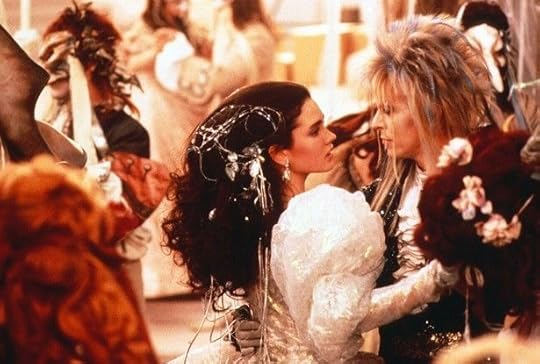
When Labyrinth was first released, critics were overwhelmingly negative, bordering on hostile. Variety called the 1986 film starring David Bowie “silly and flat,” while Gene Siskel said it was “quite awful.” Audiences at the time largely agreed: The movie grossed $12.7 million domestically—hardly half its budget—and Tri-Star Pictures pulled it from theaters after less than a month. Because Jim Henson was the director, many people, including reporters, had gone into the film expecting Muppets. Instead, they got something much darker.
The last feature film that Henson would direct, Labyrinth is about a teenage girl named Sarah (Jennifer Connelly) whose baby brother is kidnapped by Bowie’s Goblin King, Jareth. Sarah has to rescue her brother from the goblins’ castle at the center of a curiously populated maze before midnight, or he’ll be turned into a goblin. (Or something—the plot meanders and at times disappears entirely, but the whole quest may simply be a ploy for the Goblin King to win Sarah’s love.) Why then has Labyrinth—101 minutes of Bowie rock opera and Hensonian spectacle—become so beloved that it’s now a mainstream cult favorite, and what keeps people watching 30 years on?
For all its flaws and superficial delights, Labyrinth reacquainted audiences with an old idea that Hollywood had long neglected: Childhood is a scary and dangerous place, an inherently strange time filled with dead-ends, wrong turns, lies, and traps. In other words: It’s not the Muppets.
Goblins’ eyes snap open in the audience’s first glimpse of them, a dimly lit shot crowded with teeth, white-rolling eyes, green flesh, and horns. It’s a strange moment, juxtaposed with Sarah in her baby brother’s bedroom, trying to get the screaming toddler to sleep. Then the wall-to-wall goblins come out of nowhere. Are they in Sarah’s head? the audience wonders. Have goblins always been there, waiting in the corners, holding their breath, or sleeping until we say the magic words?
To access art is to access darkness, and to dwell in childhood is to dwell in a place of death, the potential deepest darkness. For those who are parents, the shadow of death is always with us. When my son was born after 24 hours of labor, the midwives informed us that I had suffered a partial placental abruption. Had the placenta fully detached too soon, my baby likely would have suffered brain damage, and I could have bled to death. Consider the terror new parents are meant to feel abut SIDS, and the alarming and ever-changing information of how parents should do the most basic of tasks: put their baby to sleep.
It’s significant that Henson’s goblins arrive in Labyrinth exactly when Sarah is attempting to do just that: put the baby to bed. When she flicks off the light and the baby goes silent, she knows instantly, instinctively, that something is wrong. Jareth enters Sarah’s brother’s bedroom in a flurry of boots and cape, snowy owl wings bating, and French doors thrown open wide. He’s stolen her brother (didn’t Sarah ask him to take the baby, pleading and desperate, not realizing he was listening?), but if Sarah can find her brother in the labyrinth before 13 hours are up, she can have him back. Under a blood-red sky, Jareth shows Sarah his maze, goblin castle at the center. Her backyard has seemingly peeled away to reveal the goblin kingdom.
Have goblins always been there, waiting in the corners, holding their breath, or sleeping until we say the magic words?
Jareth’s land, an eerie expanse of bullies, traps, and two-faced allies, is pretty much an exaggerated blueprint of childhood. In Labyrinth, as in childhood, everything is magnified and inexplicable. Things are kept from children in the interest of protecting them, but in the absence of knowing, kids supply their own answers, which are usually awful. Much of what I remember about my youth involves worrying: that there was a man staring at me from the air-conditioner vents above my bed, that a tornado would come in the night, that robbers would come in the night, that wolves would come in the night. Childhood is full of such demons. Or goblins.
With Labyrinth, Henson sought to illuminate an old notion: Childhood is notoriously dark in the traditional fairy tales of Grimm and Anderson. The little mermaid basically commits suicide and turns into sea foam. A rich man promises he will only remarry someone whose beauty rivals his dead wife, so he pursues his own daughter. A young girl’s husband turns daily into a hedgehog. (Henson would later mine some of this classic fairy-tale territory in his acclaimed but low-rated 1988 TV series The Storyteller, including the episodes “Sapsorrow” and “Hans, My Hedgehog”). Not only were these stories read to children, but they also feature children—getting eaten or starving to death, or being married off far too young to monsters.
This kind of heavy view of childhood had been distant in kids’ films from the 1970s, the era of The Bad News Bears and the Herbie series, The Shaggy DA, and Mountain Family Robinson. Children’s movies were largely saccharine and low stakes, a trend that continued in the early ’80s with movies like Popeye, Annie, and Heidi’s Song.
But childhood involves a kind of wonder that’s anything but simple. In Labyrinth, the stakes are high, but it’s hard to know who or what to trust. Most of the characters Sarah encounters in the maze are ambivalent and borderline passive-aggressive. The first creature she meets (a worm) accidentally sends her exactly the wrong way. Others won’t help her unless she solves a riddle or pays them. They offer advice that is confusing and unhelpful. Even the core group of characters who eventually become her traveling companions have mixed loyalties: There’s Sir Didymus, an oblivious fox knight, and the dwarf-like creature Hoggle who loves Sarah, yet misleads her and poisons her after Jareth bullies him into it.
The world is larger than life when you’re a child, odd and suspicious. Everything is new. There is this strange confusion of language, the rules at school, school itself. And just when you learn the rules, they change on you. Once you hit the teenage years, everything is turned upside down all over again, much like the changing staircases in one of the last scenes in Labyrinth (and in Harry Potter, which followed much later). It’s why adolescence lends itself so well to horror.
Perhaps Labyrinth was preparing its audience for the explosion of YA, the teen as self-possessed heroine inheriting the Earth, scorched though it may be.
And as Labyrinth shows, there’s particular danger in being a teenage girl. Connelly’s Sarah is 16, and Jareth, we learn, doesn’t just want a new baby to be reborn as a goblin, which is disturbing enough. He wants Sarah. He wants her to love him, and his longing increases, becoming more and more creepily clear, as the movie progresses. There’s both a paternal appeal and stranger-danger in Jareth, a confusing and unnerving quality given Bowie’s alleged statutory rape of two young fans in the ’70s (reports that only intensified after the singer’s death earlier this year). Frankly, it makes Labyrinth difficult at times to rewatch as an adult.
Labyrinth is a world of men: Almost all the creatures Sarah encounters in the maze—with the exception of the Junk Lady, who tries to make Sarah remain a child forever by piling toys onto her back, and a faerie that Hoggle tries to kill—are male. Many women have half-joked that Labyrinth was their sexual awakening, and it troubled me even as a child that I too was attracted to Bowie’s Jareth. I was drawn to the danger in him. I felt the pull of the magical world he promised, a dream world of pretty ball gowns and parties and masks and music when Sarah, after eating a poisoned peach given to her by Hoggle, fantasizes that she’s carried away in a bubble to a rollicking, fancy, and very adult masquerade party. A masked man fights his way through the crowd to her. It’s Jareth, of course. He takes off his Venetian mask, their eyes lock, and they dance in a scene with parallels to sequences from Stanley Kubrick’s 1999 film Eyes Wide Shut.
Sarah throws a chair through a window, ending the masquerade. She and her companions make their way to the Goblin City at the center of the maze. There’s a climatic fight scene won with rocks. Jareth sings a largely inappropriate song called “Within You” while Sarah tries to track him and her baby brother down. She finally defeats the Goblin King, winning her brother back and returning to the real world, with a simple line, a line of the triumph of youth, a line thrown at Jareth like a Molotov cocktail: You have no power over me.
Perhaps Labyrinth was preparing its audience for the explosion of YA, the teen as self-possessed heroine inheriting the Earth, scorched though it may be. Sarah does the right thing, as the Katnisses and Bellas and Hermiones do the right thing: Though their audience screams at them to choose fantasy, choose adventure, choose yourself, they go back to family and home and responsibilities every time. Just as I never understood why Dorothy Gale left the wonderful world of Oz and returned to flat, hot Kansas, I didn’t understand why Sarah went back from the Goblin City, to be a babysitter, an ordinary teenager. And I don’t think I ever forgave her.
The late ’80s and early ’90s saw more films exploring the bleakest territory of childhood. There was the Henson-produced adaptation of Ronald Dahl’s The Witches, and the weird and morbid All Dogs Go to Heaven. Darkness even became a subgenre with certain kids’ films like The Nightmare Before Christmas and the creepy film adaptation of Neil Gaiman’s Coraline (button eyes, anyone?).
Thirty years later, the complex and confusing Labyrinth doesn’t feel edgy as much as classic. It’s not an advance so much as a return.
More grown-up themes became acceptable in films for kids, present even in the background of otherwise light-hearted narratives. There is mental disability and drowning in The Wizard, a young girl’s death in My Girl, child neglect and panic attacks in North. Even the slapstick comedy of Home Alone relied on the premise of a young child being accidentally abandoned (and then finding elaborate ways to torture would-be burglars). Some movies for children always had an edge to them—Savannah Smiles was an early favorite of mine, with its “happy” kidnapping of a young girl, and the 1980s also saw The Last Unicorn with its murderous red bull. But Labyrinth, more than any other film, seemed to greenlight the grotesque childhood.
Nowhere is this vision more present than in the works of the Spanish director Alfonso Cuarón. His first English-language film was for children: 1995’s A Little Princess. Cuarón’s adaptation of Frances Hodgson Burnett’s book is lush, aching, and deeply lonely. The poverty and hunger here feels very real, and the antagonist Miss Minchin is a borderline sadist who delights in the misfortune of the film’s heroine, Sara Crewe. In one memorable scene, Sara places a white rose through a neighbor’s barred door, her only way to reach out.
Cuarón has alternated grownup films with kids’ fare, helming what many consider the best of the Potter films, Harry Potter and the Prisoner of Azkaban—and was J.K. Rowling’s top choice for a director. Rowling writes in a lineage seemingly straight from Henson with her child characters in constant, magical peril, battling multi-headed dogs and basilisks, Death Eaters, and the soul-split, snake-faced Voldemort. While still very young, her characters learn of the worst that can happen; they experience it themselves. It’s fitting then, that Rowling, whose Harry Potter novels are the best-selling book series in history, won the inaugural Henson Award in 2005 for “reflect[ing] the core values and philosophy of Jim Henson and the company he founded.”
With Labyrinth, perhaps Henson was reminding us: This is where we come from. This is the origin of our nights and night-fearing stories. Thirty years later, the complex and confusing Labyrinth doesn’t feel edgy as much as classic. It’s not an advance so much as a return. Childhood has been this way forever: wonderful and hard and full of horror. Labyrinth just helps us remember what, deep down, in the dark, we’ve always known.

June 28, 2016
Terror in Istanbul's Airport
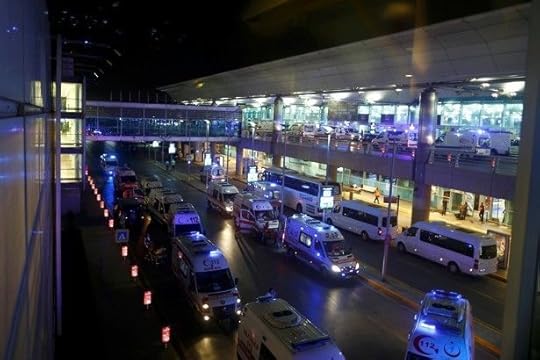
Here’s what we know:
—Explosions and gunfire were reported at Istanbul’s Ataturk International Airport Tuesday night. Turkish officials say at least two attackers opened fire at the airport’s international terminal and detonated explosives, blowing themselves up.
—Turkish media and other news organizations report at least 31 people have been killed and at least 60 wounded. Photos from the scene showed bloodied bodies and debris on the pavement outside the terminal.
—We’re live-blogging what’s happening, and you can read how it unfolded below. All updates are in Eastern Standard Time. It’s after 2 a.m. Wednesday in Istanbul.
7:23 p.m.
It is not yet clear who was behind the airport attack, but terrorist organizations often target such crowded places, known as “soft targets,” where the number of casualties can be high. In March, suicide bombers killed 16 people and injured many more at Zaventem airport in Brussels. Another 16 people were killed the same day in a bombing at a Brussels metro station. The Islamic State claimed responsibility for the coordinated attacks.
7:17 p.m.
Back in Washington, The White House said President Obama has been briefed on the attack. In a statement, White House spokesman Josh Earnest called the assault a “heinous terrorist attack” and reiterated the U.S.’s support for Turkey, a NATO ally.
“Ataturk International Airport, like Brussels Airport which was attacked earlier this year, is a symbol of international connections and the ties that bind us together,” Earnest said. “Our deepest condolences go out to the families and loved ones of those killed, and we wish a speedy recovery to those injured.”
The two presumptive presidential nominees also addressed the attack:
"All Americans stand united with the people of Turkey against this campaign of hatred and violence." —Hillary pic.twitter.com/QmSccJvcV0
— Hillary Clinton (@HillaryClinton) June 28, 2016
Yet another terrorist attack, this time in Turkey. Will
the world ever realize what is going on? So sad.
— Donald J. Trump (@realDonaldTrump) June 28, 2016
We must do everything possible to keep this horrible terrorism outside the United States.
— Donald J. Trump (@realDonaldTrump) June 28, 2016
7:10 p.m.
Anadolu, the state-run news agency, quoted Vasip Sahin, Istanbul’s governor, as saying three suicide bombers were involved in the attack. The news agency also quoted Justice Minister Bekir Bozdag as saying one attacker opened fire “using an AK-47 ... before detonating a suicide bomb.”
6:49 p.m.
Turkish President Recep Tayyip Erdogan said the attack “should serve as turning point in fight against terror around the world,” according to his spokesman, who tweeted his comments.
#Turkey President @RT_Erdogan: "The bombs that exploded in Istanbul today could have gone off at any airport in any city around the world."
— Doğan Eşkinat (@doganeskinat) June 28, 2016
#Turkey President @RT_Erdogan: "For terrorists, there is no difference between Istanbul+London, Ankara+Berlin, Izmir+Chicago, Antalya+Rome."
— Doğan Eşkinat (@doganeskinat) June 28, 2016
5:32 p.m.
Facebook has activated its safety check feature, which allows users near the Ataturk Airport to mark themselves as “safe” and alert their Facebook friends to their status.
5:23 p.m.
AP, Reuters, and others now report at least 28 people are dead, citing Istanbul’s governor. More from AP:
Bekir Bozdag said that according to preliminary information, “a terrorist at the international terminal entrance first opened fire with a Kalashnikov and then blew himself up.”
4:55 p.m.
Turkey’s state broadcaster TRT World and others have increased the number of wounded from 20 to at least 60:
UPDATE: 60 people wounded following gunfire and explosions at #Istanbul's Ataturk Airporthttps://t.co/IdFiSDynsU pic.twitter.com/POKNCzoJhv
— TRT World (@trtworld) June 28, 2016
4:49 p.m.
BBC’s Turkey correspondent Mark Lowen landed at Ataturk around the time of the attack and is tweeting what he sees:
Just landed at #Istanbul #Ataturk airport to awful news. Waiting to disembark to see what situation is
— Mark Lowen (@marklowen) June 28, 2016
All passengers being kept on plane for now. Unclear what is happening inside terminal
— Mark Lowen (@marklowen) June 28, 2016
4:39 p.m.
The U.S. State Department has advised U.S. citizens to stay away from the airport:
Multiple casualties and wounded reported at Istanbul Ataturk International Airport in #Turkey. U.S citizens are advised to avoid the area.
— Travel - State Dept (@TravelGov) June 28, 2016
4:38 p.m.
This is the second airport in Istanbul to be attacked in recent months. Last December, an explosion at the Sabiha Gökçen International Airport killed one person. A group known as the Kurdistan Freedom Falcons (TAK) claimed responsibility.
4:26 p.m.
No one has yet claimed responsibility for the explosions, but Turkey has been the target of several recent attacks both by the Islamic State, which operates in neighboring Syria, as well as Kurdish separatist groups, some of which Ankara views as terrorist organizations.
The Syrian civil war next door has created turmoil in Turkey. President Recep Tayyip Erdogan was quick to call for Bashar al-Assad's ouster soon after the conflict began more than five years ago. But the civil war shows no sign of ending, and millions of people who have fled the fighting have made Turkey their top destination. This has also allowed some members of the Islamic State to cross over and operate inside the country. Add to this restive climate, Turkey’s decades-long problem with Kurdish separatists. That conflict, which had eased in recent years, has escalated in recent months, with Turkish troops bombing Kurdish rebel group,s some of which are fighting against Assad, and those groups, in turn, attacking Turkey through bombings and other means.
4:20 p.m.
Turkey’s state broadcaster TRT World reports dozens of police, medics, and firefighters have been dispatched to the airport. The wounded are being treated at the site. TRT says Turkish Airlines staff are among the injured.
4:12 p.m.
Turkey’s state-run Anadolu news agency confirms earlier reports of 10 fatalities and gives a number wounded:
10 killed, 20 injured in Istanbul terror attack
— ANADOLU AGENCY (ENG) (@anadoluagency) June 28, 2016
4:08 p.m.
Wire services have released the first photos of the airport after the explosions. Here's one from Reuters, showing ambulances rushing to the scene:
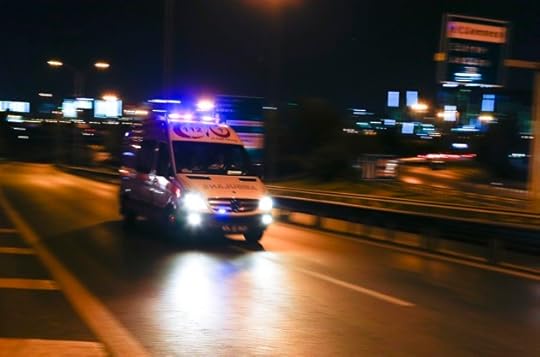
Osman Orsal / Reuters
And another, also from Reuters, of police cars blocking the road toward the airport:

Osman Orsal
4:02 p.m.
CNN Turk and other news organizations report 10 people have died after the explosions, citing Turkey’s justice minister.
3:43 p.m.
CNN Turk is reporting that taxis outside the airport are ferrying the wounded; the airport is on lockdown, the network adds.
3:42 p.m.
More on Ataturk International Airport: The airport is one of the busiest in Europe. It saw 61.3 million passengers last year, according to the website of TAV Airports, which operates Ataturk and four other airports in Turkey and several in Georgia, Tunisia, Macedonia, Saudi Arabia, and Croatia.
3:31 p.m.
CNN Turk is reporting that two explosions, as well as gunfire, were heard at Ataturk airport in Istanbul.
#BREAKING Reports of explosion and gunfire at international terminal of Atatürk Airport in Turkey's İstanbul
— CNN Türk ENG (@CNNTURK_ENG) June 28, 2016
#BREAKING Eyewitness tells CNN TURK there were two loud explosions at Atatürk Airport #istanbul #Turkey
— CNN Türk ENG (@CNNTURK_ENG) June 28, 2016
#BREAKING Casualties reported in explosion that rocked Istanbul Airport #Turkey pic.twitter.com/yNcnzxZlUq
— CNN Türk ENG (@CNNTURK_ENG) June 28, 2016
Turkey has been the target of several recent deadly attacks. Some have been claimed by the Islamic State, which operates in neighboring Syria, while others have been claimed by Kurdish separatist groups.
This is a developing story and we’ll update it as we learn more.

The On-Demand Society

When today’s consumers want to watch a TV show, they can watch it when they want on Netflix. When they want to buy household goods, they can order them from Amazon, even when the stores are all closed. And when they want a car, they can just book a Zipcar or hail an Uber, without owning a car.
This is what Deborah Borda, the president and CEO of the Los Angeles Philharmonic, called the “on-demand society” at the Aspen Ideas Festival, co-hosted by the Aspen Institute and The Atlantic. And it’s a “major challenge” to arts institutions, she said.
“In the old days, my parents would buy 10 Tuesday nights to the New York Philharmonic and they would go,” Borda said. “People don’t subscribe anymore. It’s an on-demand society. It’s a society where … we decide I want to do this right now, I’m going to get the best bargain I can get, I’m going to have the most flexibility.”
Besides the financial problems the on-demand society presents to arts institutions that rely on subscribers, Borda said there are programmatic challenges as well, particularly for musical institutions.
“When you go to a museum, you can walk through a museum at your own pace, you can dress however you want to dress. When you go to a concert, it’s a much more ... confining experience,” she explained. “This is one of the major challenges that arts institutions face, but especially musical institutions. Because so much of what we do takes away some freedom, because we do choose the programs.”

Trump’s Shockingly Specific Speech on Trade
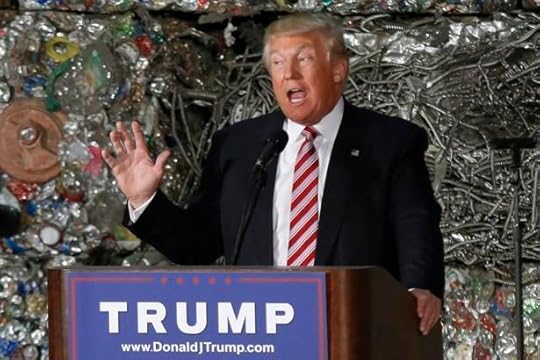
Donald Trump must have hired some researchers.
The famously off-the-cuff orator delivered a surprisingly specific speech on trade, making seven detailed policy pledges while predicting that Hillary Clinton, if elected, would tweak and then sign the enormous Pacific trade pact she now opposes as a candidate for president.
Trump’s address to workers at a Pennsylvania aluminum factory continued his recent effort to lift both the tone and substance of his speeches. But it marked an even bigger departure in its sheer wonkiness. First, his campaign sent out the prepared remarks with 128 footnotes. And in delivering the speech from a teleprompter, Trump delved into such granular policy detail that he referenced specific sections of decades-old trade laws and vowed to invoke “Article 2205” of the North American Free Trade Agreement. Doing so, he said, would withdraw the U.S. from NAFTA if its trading partners don’t agree to renegotiate the Clinton-era accord.
After a campaign shakeup and a week’s worth of polls showing Trump falling far behind Clinton, the trade speech appeared to be the candidate’s latest attempt to reassure Republican Party leaders, donors, and even voters that he has the depth of knowledge to become president. Just 48 hours ago, Senate Majority Leader Mitch McConnell refused to say in a television interview whether Trump was qualified to be president—a statement that followed an earlier musing by McConnell that Trump “doesn’t know a lot about the issues.” On Tuesday, Trump clearly wanted to demonstrate that he does—or at least that he listens to advisers who do. (Reporters noted that the campaign sent the prepared speech out on a Microsoft Word document titled “Jared,” a possible reference to Trump’s son in law, Jared Kushner, who is the publisher of the New York Observer.)
Yet if the tone and depth in Trump’s speech offer comfort to Republican establishment figures, the actual policy is more likely to scare them back into hiding. This was a populist speech aimed squarely at the supporters of Bernie Sanders, representing a reversal of decades of GOP orthodoxy on the benefits of free trade. “This is not some natural disaster. It is politician-made disaster,” Trump said as he detailed job losses that he blamed on trade agreements signed by presidents of both parties in the last 25 years. “It is the consequence of a leadership class that worships globalism over Americanism.” His threat to slap tariffs on China drew an immediate rebuke from the U.S. Chamber of Commerce, the business lobbying group that has historically aligned with the GOP.
Under Trump's trade plans, we would see higher prices, fewer jobs, and a weaker economy https://t.co/3xcCNgiS2k pic.twitter.com/9jPtGXAOlQ
— U.S. Chamber (@USChamber) June 28, 2016
While Republicans backed NAFTA and voted to give Obama the authority to negotiate the Trans Pacific Partnership, Trump blamed both policies on the Clintons. “As Bernie Sanders said, Hillary Clinton ‘Voted for virtually every trade agreement that has cost the workers of this country millions of jobs,’” Trump said, in his most direct appeal to disaffected liberals. “Trade reform, and the negotiation of great trade deals, is the quickest way to bring our jobs back back to our country.”
Trump also made specific policy attacks on Clinton. The former secretary of state has come out against the final version of the TPP after championing the pending trade deal while in office, and Trump predicted she would shift her position on trade again once in office.
Here’s how it would go: she would make a small token change, declare the TPP pact fixed, and ram it through. And you will suffer. That’s why Hillary is now only saying she has problems with the TPP ‘in its current form.’
If the media doesn’t believe me, I have a challenge for you. Ask Hillary Clinton if she is willing to withdraw from the TPP her first day in office and unconditionally rule out its passage in any form.
With an eye toward Rust Belt voters in Ohio and Pennsylvania, that tactic could force Clinton into an awkward position, since Trump’s forecast mirrors both the fears expressed by Sanders supporters and the hopes whispered privately by TPP advocates in the Obama administration, who want to see Congress ratify the agreement in a lame-duck session after the election.Trump couldn’t resist one of his patented exaggerations, however, as he claimed that it was his position that “shamed” Clinton into opposing TPP when it was really the primary threat from Sanders that forced her hand. Clinton’s initial response on Tuesday did not cite the TPP but instead sought to portray the businessman as a hypocrite who outsourced his own operations overseas.
Trump's speaking about outsourcing right now.
Here’s one of his shirts—made in Bangladesh: https://t.co/GBx8oJhE6W pic.twitter.com/2jeNO3NDbq
— Hillary Clinton (@HillaryClinton) June 28, 2016
For Trump, Tuesday’s fiery, substantive economic speech was a no-brainer. Unlike foreign policy, his criticism of trade deals has been a source of relative consistency in his herky-jerky campaign, and it’s one that has a lot of appeal with voters in the Midwest and Rust Belt states he needs to win. As for GOP leaders, he’s betting they’ll appreciate his more buttoned-up style while ignoring a populism they generally abhor.

The Opening of Visa-Free Travel from Mexico to Canada

Canada announced Tuesday it would drop visa requirements for Mexican visitors as of December 2016, and in exchange Mexico announced it would open its markets to Canadian beef.
Canadian Prime Minister Justin Trudeau and Mexican President Enrique Peña Nieto made the announcement in Ottawa, ahead of the North American leaders’ summit on Wednesday, where they will be joined by U.S. President Obama.
A statement from Trudeau read:
Lifting the visa requirement will deepen ties between Canada and Mexico and will increase the flow of travellers, ideas, and businesses between both countries.
Closer collaboration between Canada and Mexico on mobility issues will also help encourage travel between the two countries while preventing any increase in asylum claims or other irregular migration. Officials plan to meet regularly to promote these mutual interests.
From 2005 to 2008, asylum claims in Canada had tripled, and many of those were from Mexican citizens. In 2009, the conservative Canadian government, headed by then-Prime Minister Stephen Harper, imposed the visa restrictions to cut down on asylum applications. Last year, Trudeau ran on a platform to repair the country’s relationship with its North American partners, which included a promise to rid the visa requirement for Mexico.
For its part, Mexico agreed to open its beef market to Canadian exporters, which it had closed in 2003 after the discovery of mad-cow disease in Canadian beef. Mexico later relaxed its restrictions, but limited it to animals under 30 months of age. Canadian cattlemen say they believe Mexico could buy as much as $250 million in beef each year.

The American-Run Hotel in Cuba

A U.S. company now operates a hotel in Havana for the first time since the Cuban Revolution more than 55 years ago.
The government-owned Gaviota 5th Avenue Hotel will now operate under the Four Points by Sheraton brand. The Cuban government and the company behind the brand, Starwood Hotels & Resorts Worldwide, signed an agreement in March allowing the company to operate two hotels on the island. On Tuesday, Starwood officially took over.
Starwood will start operating the second hotel, Gran Caribe Inglaterra Hotel, on August 31.
Starwood is now the first American company to invest heavily in the communist country since 1959. As Reuters reports:
For decades, such arrangements have been prohibited under the U.S. economic embargo of the Communist-ruled island. But while the embargo remains in place, the Obama administration has loosened restrictions on trade and investment since it announced a detente with Cuba in December 2014.
“This is a historic moment,” said Nancy Sarabia, public relations manager for the hotel, adding that the official inauguration would take place on Tuesday. She called the hotel “a symbol of brotherhood and collaboration.”
The company, which operates other chains like the W Hotels and the St. Regis, will refurbish the hotel in the coming months, while keeping it open.
Tourism is already on the rise in Cuba. In the first three months of 2016, there were 14.6 percent more visitors than in the same period last year.

Atlantic Monthly Contributors's Blog
- Atlantic Monthly Contributors's profile
- 1 follower



